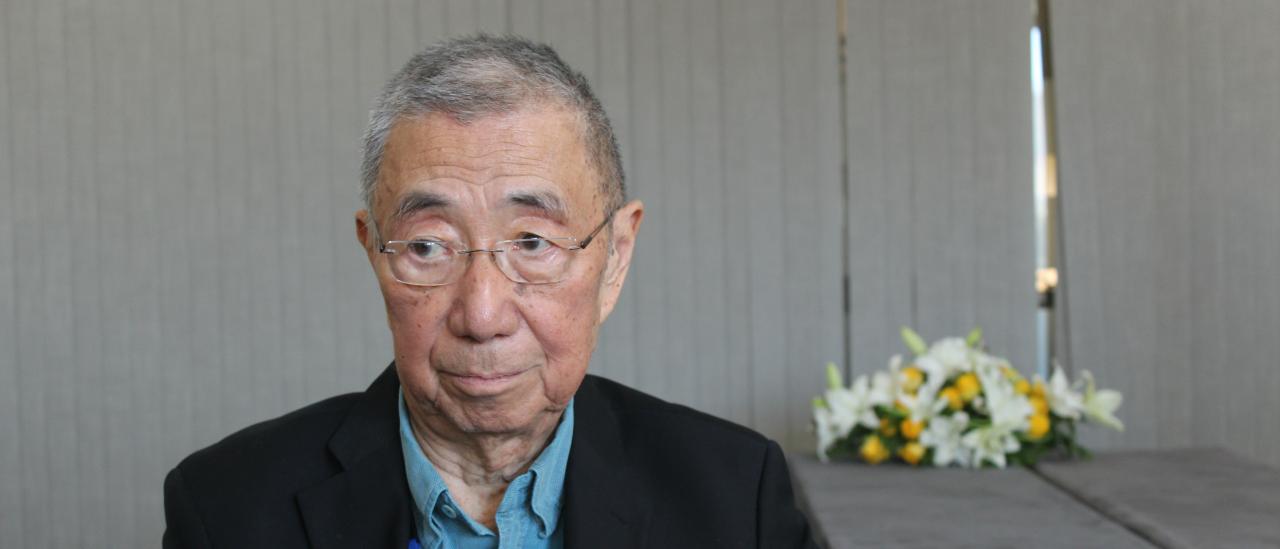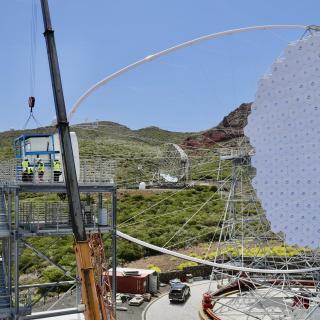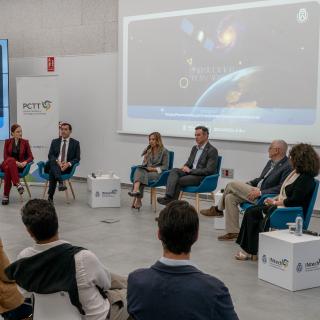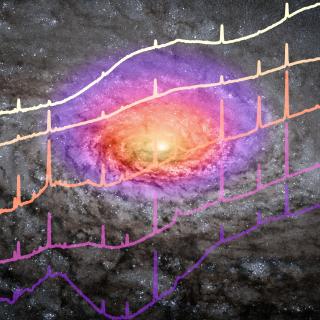“I still remember the surface of the Moon seen from the Teide Observatory”. He will never forget the image: Sharp, close up, and brilliant. It was the first time that he had observed our satellite through a large telescope. Since then Professor Samuel Ting had always wanted to return and enjoy the quality of the sky in the Canaries, and its Observatories. Almost 20 years later he has returned to be amazed again: he is visiting for the firs ttime the Roque de los Muchachos Observatory, within the boundary of the municipality of Garafía (La Palma), accompanied by Rafael Rebolo, the current director of the IAC. He is doing so after a week’s participation in the meeting of the Alpha Magnetic Spectrograph (AMS) consortium, help in Santa Cruz de La Palma. This instrument is installed on the International Space Station (ISS). “Even though this island is not very big, the international prestige of the Instituto de Astrofísica de Canarias is indeed great” he emphasized. And I hope that the giant Thirty Metre Telescope (TMT) originally planned for installation in Hawaii finally comes to La Palma”.
“I think that the theoretical physicists have a long way to go before they can predict accurately the measurements of the AMS”.
“This is a small island, but it has one of the most important astrophysical observatories in the world”.
1. What led you to choose the island of La Palma to celebrate this meeting?
I was here [in the Canaries] 18 years ago to visit the Teide Observatory, whose director then was Francisco Sánchez. He made a big impression on me because he had managed to build up a world class observatory. Of all the observing sites I have visited few have caused such a strong impression on me as this one. Here very good work has been done. I still remember the night when I went to one of the telescopes to look at the surface of the Moon. I think that was the main motive.
2. What does the AMS do that is differnt from other experiments in astroparticle studies?
The reason that NASA supports it, as do so many other institutions and governments, is its precision, and its ability to measure different particles. It can detect things never before achieved. Almost all the data we have contradict previous results, and bring down established theory. We have had intense debates about which theories can explain our results. I think that the theoretical physicsts have a long way to go before they can predict our measurements with precision.
3. So do you think that there will be new theories thanks to the AMS?
There are still things we need to understand in order to comprehend the data which we have measured. The measuring systems to determine the different types of behaviour of the elements in the periodic table are very accurate nowadays. A few years ago nobody would have expected this.
4. One of the biggest projects of ground-based observations of gamma rays will be the CTA. How could the data from the AMS complement that from this telescope array?
They are complementary experiments. AMS studies the particles which have travelled through space, leaving a trail as they do so, those with magnetic charge. And there are other particles, such as photons or neutrinos, which are not charged, and are to be studied by the CTA. That is why the two methods are complementary.
5. Do you think that with the data collected by the AMS we are closer to understanding antimatter or dark matter?
Until now we have obtained very interesting results about antmatter and dark matter. But the rate of detection of tracers of antimatter is very low, one in a hundred thousand million. For that reason we are carrying out a complete set of tests on the signals we have found before announcing this.
6. What does it mean to you to have a star in the Pathway of the Stars of Science?
I feel honoured, but I would prefer to see a real star first (laughs). This is a small island, but it has one of the most important astrophysical observatories in the world. I hope that the Thirty Metre Telescope (TMT) originally planned to be installed on Hawaii finally comes to La Palma. And I think that in the future the IAC will make fundamental contributions to our knowledge of the Universe.



